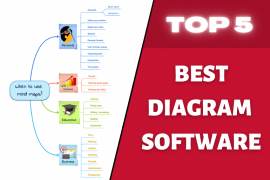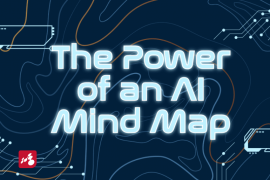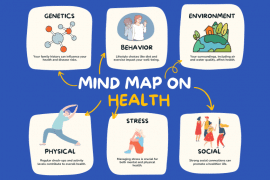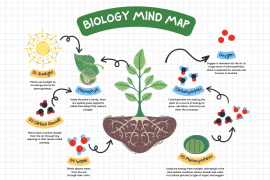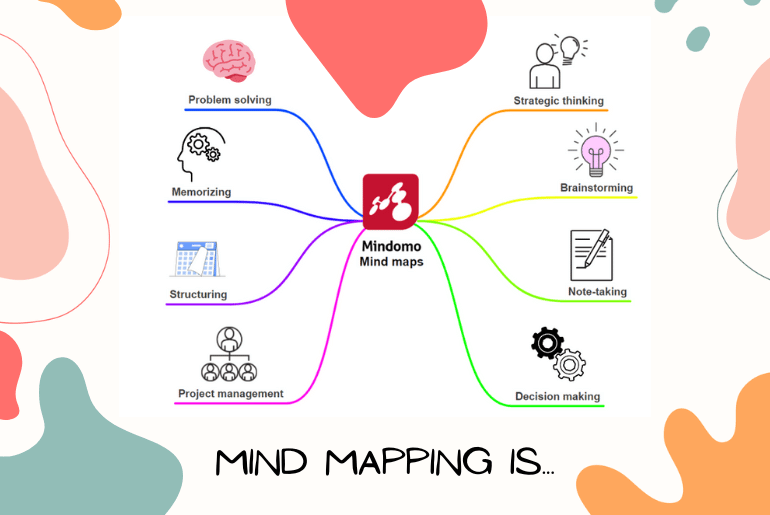
There are dozens of books and hundreds of online articles that explain what mind mapping is and how to do it. So many, in fact, that there hardly seems to be room for another one.
All of these explanations follow the same path. First, the question “What is mind mapping?” is interpreted as “What is a mind map?” Then there is an explanation of what a mind map is, some examples, and advice on how to create a mind map from a blank page. The advice ranges from basic suggestions to strict formulas. Most of the advice is similar, yet some of it is conflicting.
But what if this is the wrong question? Knowing what mind mapping is might not explain why you should use it. How about “what is it like to be good at mind mapping?” This is hardly ever asked or answered, so we will try to answer it.
What is it like to be “good” at mind mapping?
First, let’s clarify the basics of the diagramming process. Then, we can look at what makes it successful. We will focus on a mind map creator, not on diagrams as they were promoted by Tony Buzan.
Most definitions speak of a hierarchical diagram built around a central concept, with connected information radiating outwards. Single word topics and short phrases make it easier to read. Images and color make it memorable and visually appealing. Diagramming can be used by anyone for almost any purpose. Popular uses are brainstorming, studying, planning, writing, problem solving, time management, and organizing information. Research showing the benefits of mind mapping to exam grades is often quoted.
Tony Buzan founded The World Mind Mapping Championship. The evaluation criteria include diagramming rules, map accuracy, and how well the authors understand the subject. Judges just look at the maps, they don’t interview the authors. However, software is not allowed, so this approach doesn’t shed much light on the best ways to use dedicated software.

IIf you have ever browsed the vast online gallery of diagrams, you may have noticed some are small, some large, some incomplete, some are easy to read, and some are obscure. Some look pretty, some are ugly, and some are just strange. The only common feature they have is that they are hierarchical and radiate outwards from the center of the page. Beyond that, almost anything goes.
This leads us to wonder whether it is helpful to judge a diagram on its own and whether looking at other people’s examples actually tells us anything.
A mind map is only one frame from a movie
Diagramming is a creative exercise involving imagination, inspiration, recall, insight, problem-solving, and making connections. The map is a snapshot of a dynamic process, not the goal of that process.
Our brains contain billions of mirror neurons, which fire when we do something and see someone else doing the same thing. When we watch an activity, we imagine we are doing it and what it feels like. When we watch a video of someone falling off their skateboard and landing on a handrail, we almost feel their pain. A still photograph of the same event doesn’t trigger the same anticipation and empathy.
A diagram is a still photograph of a dynamic process of discovery and building. The map doesn’t tell us much about the changes that are taking place in its author’s mind. We don’t travel on the same journey as them just by looking at their map. You can’t tell from a snapshot whether it has been through five iterations or five hundred. The “aha!” moments and the sudden flood of understanding are not captured in a static image.
Knowing what someone else knows is useful. Understanding why and how they became knowledgeable is much more revealing. We learn something from the journey, not just from the destination.
Modern technology gave us the ability to see what is beneath paintings. Before, we could only see the final version. Now, we can look below the surface to find different sketches and understand what has been added and taken away. This causes much excitement and interest. Turns out we are just as interested in the story behind the painting as we are in the final result.
A mind map is a key to the author’s mind
The relationship between the author and their diagram can be likened to a lock and key. A lock is no use unless you have a key. A key is no use on its own without a lock. A shiny key with a colored ribbon on it might look great, but it does not work very well. A plain and dull key might unlock a treasure chest full of jewels in a single turn. You can’t really tell how well it works by looking at the key alone.
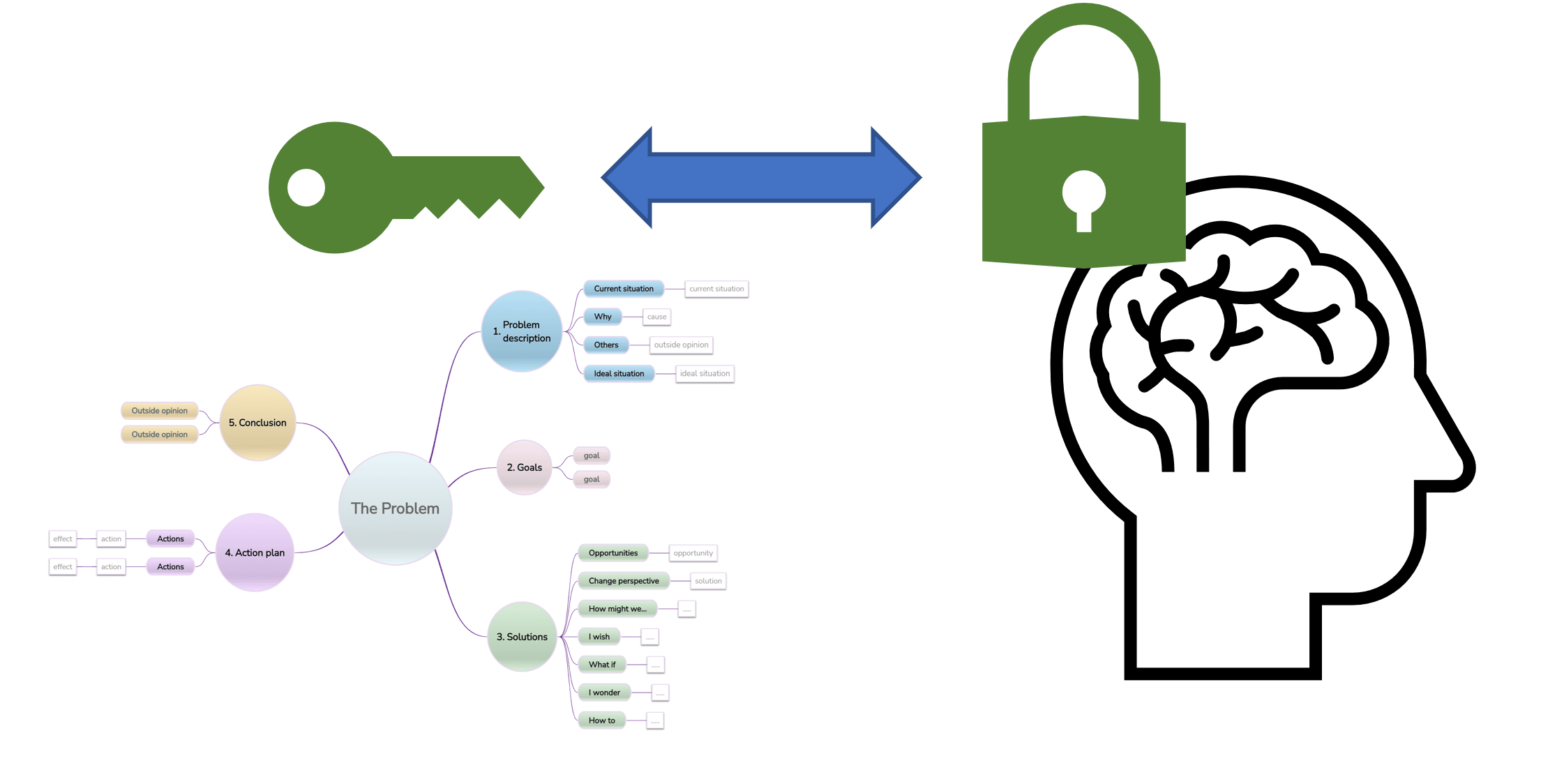
Diagramming frequently unlocks what you already know, making it usable and actionable. It’s a conversation that follows interesting threads and brings out points that have been hidden from view. If you aren’t part of the conversation, the diagram by itself gives only fleeting clues.
To the right person, a single word is enough to unlock an idea. You have a key but still imagine what kind of lock it might fit. It’s hard to tell whether a map works well from the map alone.
Writing is a tool for thinking
Writing is a tool for thinking. Externalizing your thoughts and ideas is essential for you to master them. Not copying word for word, not highlighting phrases in books, not making margin notes, but rewriting things in your own words. There is a lot of research showing the link between writing and memory, critical thinking, creativity, and more. Externalizing an idea or piece of information means we don’t have to “keep it in mind” for the moment.
We can only learn new things by connecting them to what we already know. When we have made a connection, we can refine it. The relationships between pieces of information contain and build up further knowledge.
Just about any type of diagram works to create a scaffolding for thinking. A diagram in which lines connect words is easy to draw. A line always means continuity, commonality, or connection. We have cells in our visual system whose only job is to recognize lines and draw our attention to them.
A tree or spider diagram has a straightforward layout yet is easy to extend. You can start with a blank page and keep adding sub-branches, almost without limit. We are good at breaking things down into smaller pieces to determine what makes them tick. Mind map software that can automatically make space when we want to insert something new means we can concentrate on the ideas and let the software take care of the layout for us.
Putting these things together, a good diagram
- is written in your own words,
- makes connections between ideas,
- is easy to expand and
- helps you to see patterns.
These properties make it ideally suited for creating a wide range of scaffolding for thinking, understanding, learning, and planning.
Plan for change
Creating diagrams with software is not about starting at the central concept and working outwards in a logical, ordered fashion. It’s about the gradual evolution of a structure that looks like you did that. You have to make a start somewhere, and it doesn’t really matter where. As you build up your map and your insight deepens, you change the structure so that you can seamlessly absorb new information and new ideas.
A good design is able to handle change without drama. The ability to handle change is more important in the long term than performance today. Ask any project manager about inevitable change. A diagram that can be easily restructured and extended is much more valuable than one that is correct today but too difficult to modify tomorrow. A map reaches the end of its useful life when it is easier to start again than to edit it.
As mentioned above, we can only learn new things by connecting them to something we already know. Whether you are making a map of an existing issue, something new that you want to learn, or something that doesn’t exist yet, your starting point is always something you already know. From there, you are trying to find a “shape” for the subject that makes it easy to add new information and generate ideas. Adding new things to a map should strengthen it, not weaken it.
Start with a “car park” topic
One technique is to start every map with a “Car park” topic. This is where you park things before you have worked out where they really belong. When a new bit of information arrives or an idea comes to you, it goes in the car park first.
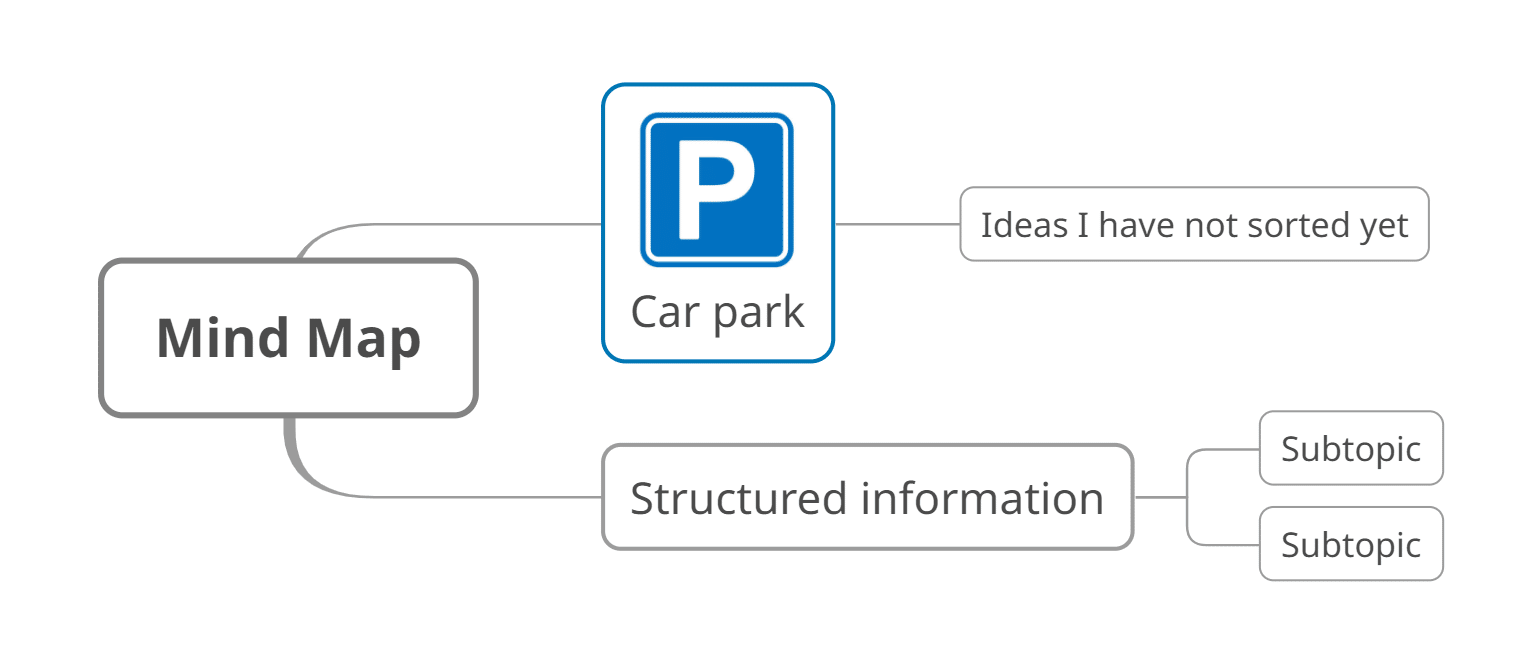
From the car park tree, you can:
- Discard a topic if it is not relevant to your objectives.
- Move a topic to the best place on your map. It should reinforce existing knowledge, fit a pattern, fill a gap, and be a sensible place to look when you need to find it again.
- Develop a new destination for a topic.
- Conclude that this piece of information or idea is relevant and important, but the map must be reorganized to integrate it meaningfully.
If your map needs reorganization, you must be prepared to do that sooner rather than later. Temporarily putting something in the “wrong” place because you don’t have the time to reorganize will lead to trouble in the future. Everyone has diagrams where some important concept got buried four levels down because that’s just where it surfaced, and it never got fixed. These are the diagrams that you avoid returning to. You are better off leaving something in the car park than moving it to an obscure place where it disrupts the flow.
Get immediate feedback from your diagram
Feedback is essential to progress. Without feedback, we can believe that our ideas and knowledge need no improvement. Only if we are willing to seek and understand feedback can we move forward.
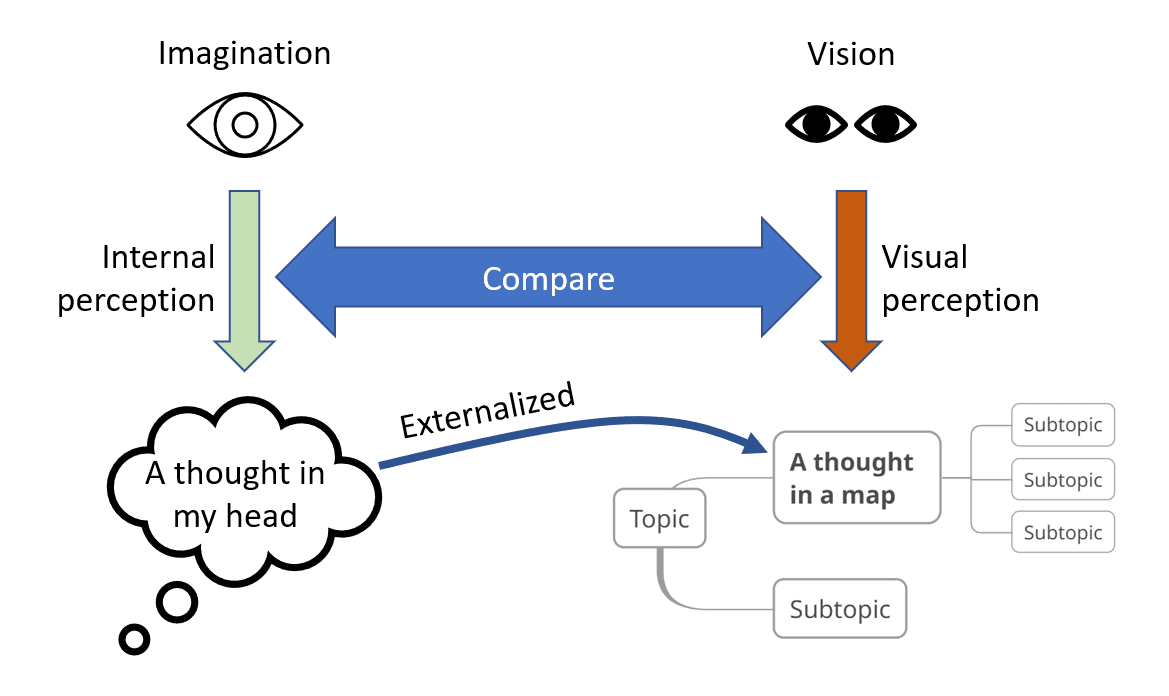
Your map gives you immediate feedback on your thinking. When you think about something, you see it in your “mind’s eye” or imagination. When you write it down and look at it, you see it with your eyes. You are now seeing things in stereo from two different positions. Do they look the same? Does the map represent what you actually meant? Does it really fit where you have placed it? By committing something to the map, you are testing your thinking. When creating maps, it is normal to rephrase things and move them around several times until the structure starts to solidify. You should expect to move things around quite a lot in the early stages of building a map.
Wrap-up
A “good” map means:
- If asked, you could briefly state why you had made this map and what it enables you to do.
- You feel confident about explaining the subject to others, using your map as a guide. Thinking about teaching others is a good way to clarify the important points and the thinking behind them.
- You can reorganize your map if you need to. It is not so delicate or complicated that you are afraid to try.
- You can find things in the map and feel confident that if you can’t find them, they are not there.
- The number of times you feel the need to reorganize your map is decreasing, and you feel increasingly confident about integrating new ideas and information.
- You have a way of dealing with fragments of information or new ideas that seem relevant, but don’t fit in. These are opportunities to strengthen it.
- Leaving a partially completed map alone for a while leads to new ideas and new understanding when you return to it. This is especially useful for problem-solving situations.
- You feel confident about returning to this map in a year’s time when you have forgotten most of the details. It will help you to grasp the basics again and continue to use it. This probably means avoiding single word topics in favor of statements.
A good diagram is updateable and improvable. It does not need to have a nice central image, one word per line, or plenty of color. Instead, it should be a snapshot of a flexible and thoughtful process that always strives for better.
Keep it smart, simple, and creative!
Author: Nick Duffill



